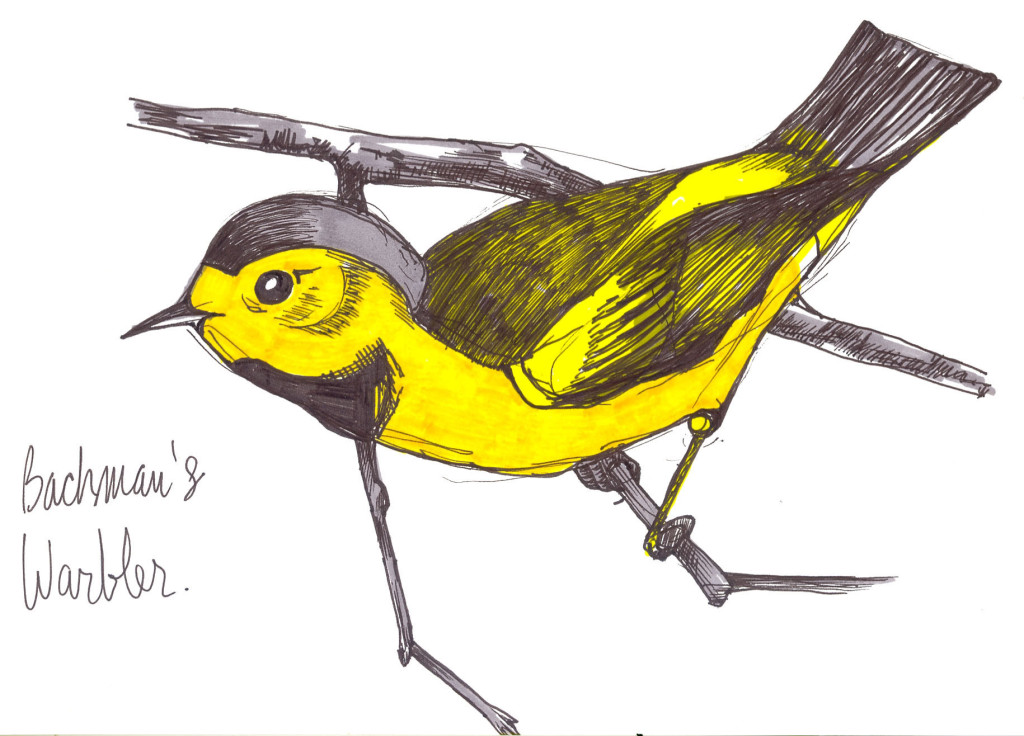Bachman’s Warbler was named after the Reverend John Bachman, a good friend of Audubon’s, who collaborated with him on his second book, Viviparous Quadrupeds of North America, as author of the text. Bachman served as a pastor in Charleston, South Carolina for 56 years, and met Audubon as a result of his ongoing research into local natural history. Audubon visited Charleston in 1831 while traveling around the south trying to sell subscriptions to his publication in progress, Birds of North America. The two became friends through their common interest in natural history, flora and fauna, and Audubon came back many times to Charleston to visit with his friend and talk about natural history. Two of Audubon’s sons later married two of Bachman’s daughters.
Audubon named the warbler after his friend when he included it in The Birds of North America, though he never saw a living example of the bird himself; the painting in the book is based on a mounted skin that Bachman gave him. It is a small passerine that lives in the swamps and low-lying forests of the southeastern US, and winters in Cuba. The last confirmed sighting of this bird was in 1988 in Louisiana and many scientists believe it to be most likely extinct.
Male and female Warblers have different markings, what ornithologists call a sexually dimorphic species; they also have different plumages for spring and fall; mostly variations on yellow, gray and olive, with the male being more vibrant.

Lithograph by Audubon
Selective logging in the forests where it lived meant that it did fairly well throughout the nineteenth century, but when clear-cuttting became more common, the birds became scarcer. By the 1930’s they were rare. The last specimens were collected in the 1940’s. The forests where it lived have been heavily logged, the canebrakes (a piece of ground covered with a dense growth of canes) where we think it nested are disappearing, and the swamps have been drained. A hurricane in Cuba during its winter season there in the 1930’s might have wiped out enough of the birds to make it too rare and far-flung to find each other to breed.
But like many very rare species, occasional sightings and reports of small populations pop up now and again. Individuals were reportedly seen throughout the 1950’s and 60’s. Once in a while a video will turn up showing a bird that looks like it might be a warbler. A remote pocket in South Carolina’s Congaree National Park might still harbor a few holdouts. It has been known to happen: every once in a while an animal that has been declared extinct unexpectedly wanders out of the wilderness to say, hello, I’m right here. People hold out hope. Rare species symbolize the uncertain.
A side note: Wikipedia reports that:
In the comic strip Doonesbury, Dick Davenport, a bird watcher and husband of a major character, died in 1986 due to a massive coronary brought on by observing and photographing this species. This death scene has been noted as a particularly memorable one in the history of comics.[12]


